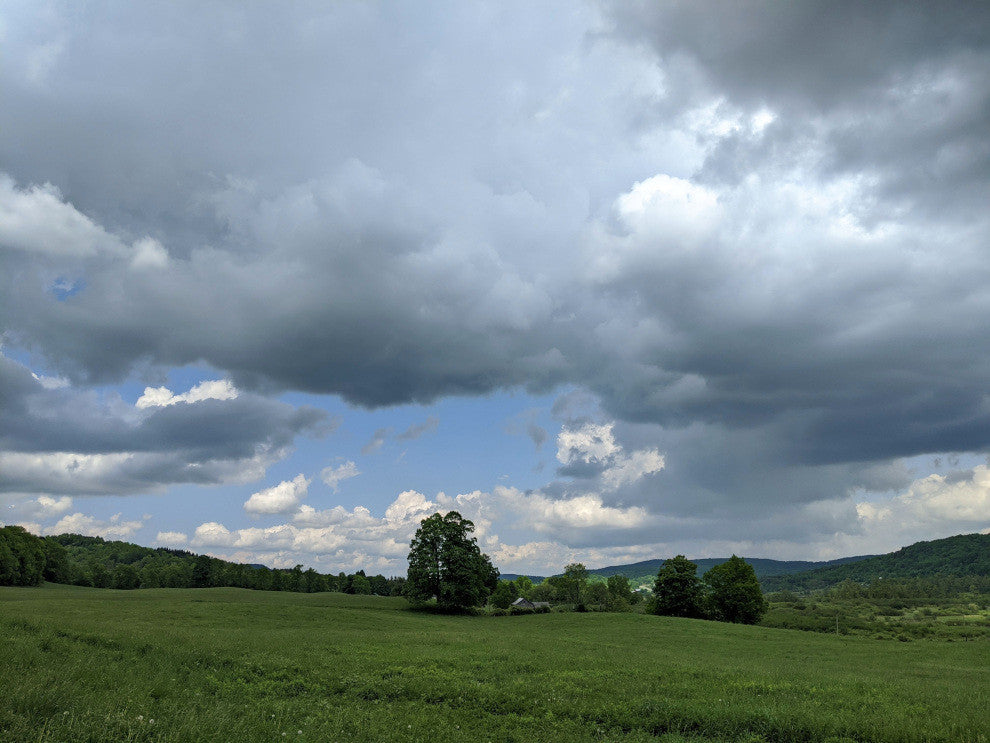Out driving earlier this week I passed a sign for an upcoming fundraiser in support of Anabaptist HealthShare, an insurance alternative geared towards communities of Plain People. There were a few dozen Amish setting up tents and tables in front of a new building, still under construction, which I assume will be a clinic.
I’ve often wondered about the strains placed on Amish communities by modern costs, healthcare chief among them. Many Amish still rely on community fundraising to cover medical bills, since, as a rule, they do not believe in health insurance. But as the cost of care continues to increase, it is hard to see how this approach can continue to work. The website of Anabaptist HealthShare emphasizes that it is a cost sharing network, not an insurance company, but it is certainly more like an insurance company — negotiating bills, covering a set amount of costs — than simply relying on the goodwill of neighbors.
My interest in the Amish approach to engaging with the modern world is twofold. First, I am fascinated by the pragmatic steps taken by one of the only groups that has successfully figured out a replicable way to limit the role of technology; because there is no Amish pope, each community decides for itself what technologies will and will not be allowed, along with many other restrictions on dealings with the broader world. While I have no desire to be Amish, I am curious about less extreme applications of the fundamental insight that novel technologies shape communities just as much as individuals.
Second, I am curious to see which technologies the local Amish do choose to adopt and the limits they place on them. As I said a moment ago, each Amish community decides for itself what to allow and what to disallow. So some will allow skid steers or tractors to be used, but only in the farmyard. Others will let them out in the field, but only if they have metal wheels instead of rubber tires. Many have phones, but only in the barn rather than the house. Some allow electricity for powering electric fences and running milking machines but not for lights.
I’m not surprised that healthcare is an area of priority, and also one where compromises like non-insurance pooled cost sharing are made. And while limiting the phone to a landline in the barn strikes me as a touch extreme, I think it is a saner approach than giving ten year olds unfettered access to smartphones.
Meanwhile, out in Tennessee the Department of Transportation is adding a buggy lane to a busy road in a community with a large Amish population. Where I live there’s so little traffic that the increasing number of buggies on the road aren’t a problem, but I can easily imagine the danger to their drivers in areas with more congestion.
Sometimes I think this is all far too little, that the rapidly growing Amish population, the pace of technological change, and the shifting contours of the economy are building to an inevitable catastrophe. I can imagine a world a few decades from now in which there are more Amish than ever living in a world that can no longer comfortably accommodate them.
But I can also imagine (and hope for) a world with many more communities that are a little bit like the Amish, if far less extreme. Since I just mentioned phones, here’s an example: it is possible that meaningfully restricting children’s access various technologies will come to be viewed as a community value rather than exclusively an individual choice. Like-minded parents might want classrooms that accommodate this choice, rather than moving more and more education onto tablets.
Or perhaps there will be new agricultural communities, like Amish communities in which the ideal is that everyone possible own a farm, but ones in which people who value direct connections with the sources of their food live close enough to make field days and seasonal festivals a matter of course. The same economic changes that may doom the Amish could also allow a broadening of possibilities.
Viewed this way the Amish are not an anachronistic remnant, doomed to flame out, but a clarifying outlier from which we can learn useful lessons.

